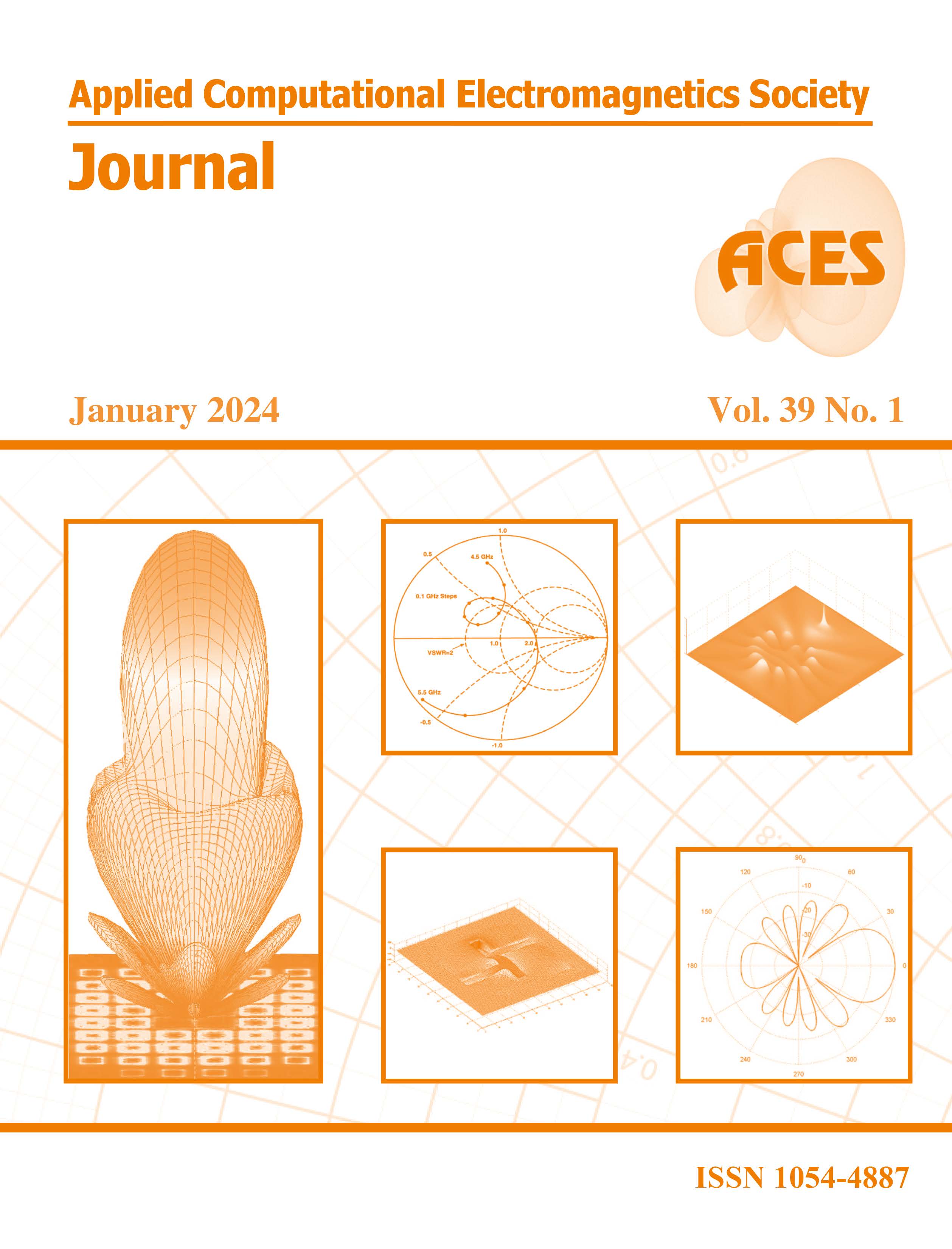Research on the Prediction Method of Conducted Interference in Flyback Converters based on the High-frequency Transformer Model
DOI:
https://doi.org/10.13052/2024.ACES.J.390110Keywords:
Conducted interference, high-frequency model, interference prediction, self-organizing migrating algorithm (SOMA), transformerAbstract
Conducted electromagnetic interference (EMI) has always been a challenge for designers of switched-mode power supplies. Flyback converters are used in various applications. However, as the switching frequency of these converters increases, the issue of electromagnetic interference becomes progressively more severe. In light of this, this paper presents a predictive method for conducted interference in flyback converters, based on a high-frequency transformer model. A high-frequency transformer model topology is proposed, integrating traditional inductance models with a three-capacitor model. Subsequently, a self-organizing migrating algorithm (SOMA) is employed for the extraction of parameters from the high-frequency transformer model, and a high-frequency model is established for a transformer. Finally, the high-frequency model is applied to the prediction of conducted interference in flyback converters. The results demonstrate that the proposed predictive method can effectively forecast the actual conducted interference, thereby providing a reference for suppression of conducted electromagnetic interference.
Downloads
References
J. Dong, W. Chen, and Z. Lu, “Modeling and analysis of capacitive effects in high-frequency transformer of SMPS,” Proceedings of the Chinese Society of Electrical Engineering, vol. 27, no. 31, pp. 121-126, 2007.
W. M. Colonel and T. Mclyman, Transformer and Inductor Design Handbook, Boca Raton, FL: CRC Press, 2004.
Z. De Grève, O. Deblecker, and J. Lobry, “Fast computation of R L parameters of high frequency multi-winding magnetic components,” COMPEL-The International Journal for Computation and Mathematics in Electrical and Electronic Engineering, vol. 30, no. 6, pp. 1914-1926, 2011.
G. Antonini, A. Orlandi, and C. R. Paul, “Internal impedance of conductors of rectangular cross section,” IEEE Transactions on Microwave Theory and Techniques, vol. 47, no. 7, pp. 979-985, July 1999.
H. Y. Lu, J. G. Zhu, and V. S. Ramsden, “Comparison of experimental techniques for determination of stray capacitances in high frequency transformers,” 2000 IEEE 31st Annual Power Electronics Specialists Conference. Conference Proceedings, vol. 3, pp. 1645-1650, 2000.
X. Margueron and J. P. Keradec, “Identifying the magnetic part of the equivalent circuit of n-winding transformer,” 2005 IEEE Instrumentation and Measurement Technology Conference Proceedings, pp. 1064-1069, 2005.
R. C. Degeneff, M. R. Gutierrez, and P. J. McKenny, “A method for constructing reduced order transformer models for system studies from detailed lumped parameter models,” IEEE Transactions on Power Delivery, vol. 7, no. 2, pp. 649-655, Apr. 1992.
B. Cogitore, J. P. Keradec, and J. Barbaroux, “The two-winding transformer: an experimental method to obtain a wide frequency range equivalent circuit,” IEEE Transactions on Instrumentation and Measurement, vol. 43, no. 2, pp. 364-371, Apr. 1994.
Hai Yan Lu, Jian Guo Zhu, and S. Y. R. Hui, “Experimental determination of stray capacitances in high frequency transformers,” IEEE Transactions on Power Electronics, vol. 18, no. 5, pp. 1105-1112, Sep. 2003.
C. Liu, “High voltage high frequency transformer wide-frequency modeling method and its application research,” Ph.D. dissertation, Dept. of Electrical Engineering, North China Electric Power University, Beijing, China. 2017.
L. Xie, X. Ruan, and Z. Ye, “Equivalent noise source: An effective method for analyzing common-mode noise in isolated power converters,” IEEE Transactions on Industrial Electronics, vol. 63, no. 5, pp. 2913-2924, May 2016.
M. Ferber, C. Vollaire, L. Krähenbühl, J.-L. Coulomb, and J. A. Vasconcelos, “Conducted EMI of DC–DC converters with parametric uncertainties,” IEEE Transactions on Electromagnetic Compatibility, vol. 55, no. 4, pp. 699-706, Aug.2013.
H. Chen and G. Liu, “Determination of the width of shielding foil in sandwiched winding transformer for minimizing common mode EMI of flyback converters,” IEEE Transactions on Electromagnetic Compatibility, vol. 62, no. 2, pp. 639-642, Apr. 2020.
J. Liu, L. Zhou, Y. Luo, X. Huang, and G. Wu, “Dielectric frequency response of oil-paper composite insulation with transient moisture distribution,” IEEE Transactions on Dielectrics and Electrical Insulation, vol. 20, no. 4, pp. 1380-1387, Aug. 2013.
M. Zhou, Y. Zhao, C. Zhang, X. Liu, X. Wu, Y. Sun, and W. Yan, “Predicting the impact of transient voltage suppressor used for ESD protection on the low noise amplifier,” Microelectronics Journal, vol. 113, July 2021.
Y. Pei, H. Ma, M. Zhou, W. Yan, and C. Zhang, “High-frequency characteristic modeling of common mode chokes based on self-organizing migration algorithm,” Electronic Components and Materials, vol. 42, no. 02, pp. 200-205, Feb. 2023.
P. R. Wilson and A. D. Brown, “Effective modeling of leakage inductance for use in circuit simulation,” 2008 Twenty-Third Annual IEEE Applied Power Electronics Conference and Exposition, pp. 391-395, 2008.
F. Hubert, P. Dorsch, D. Kuebrich, T. Duerbaum, and S. J. Rupitsch, “Piezoelectric EMI filter for switched-mode power supplies,” IEEE Transactions on Power Electronics, vol. 36, no. 6, pp. 6624-6643, June 2021.
D. Jiaqi, Y. Ru, L. Zuolian, Y. Hong, and J. Hai, “Modeling and analysis of conducted EMI on flyback converter using power management IC with chaotic suppression EMI,” 2020 22nd European Conference on Power Electronics and Applications (EPE’20 ECCE Europe), pp. 1-10, 2020.




